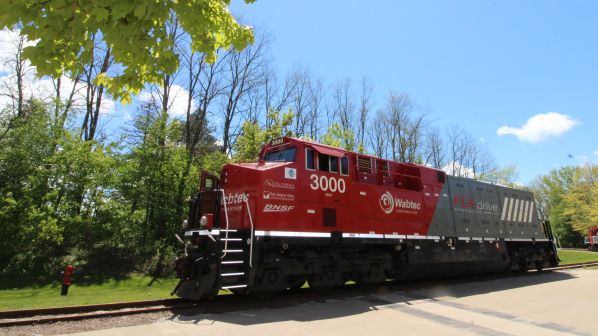TRIALS of a battery-electric locomotive developed by Wabtec and operated in commercial service by BNSF between Barstow and Stockton, California, between January and March, have shown an 11% reduction in fuel consumption and greenhouse gas emissions compared with standard diesel units operated on the same route.
The battery-electric locomotive was operated in a consist between two Tier 4 locomotives and covered 21,430km during the trials on mostly hilly terrain in the San Joaquin Valley. The 195-tonne FLXdrive locomotive is equipped with 18,000 lithium-ion battery cells, which were charged at the depot and during operation using regenerative braking.
The FLXdrive manages the train’s overall energy flow through its Trip Optimisation system, which Wabtec describes as an intelligent cruise control system that is programmed through artificial intelligence and is able to respond to every twist and change of grade in “the most energy-efficient way possible.”
“This demonstration of coupling 2.4MW/h of battery storage into the mix fully validated our assumptions for the potential for this next generation technology to further drive efficiencies and greenhouse gas reductions,” says Mr Eric Gebhardt, Wabtec’s chief technology officer.
The pilot project was funded as part of a $US 22.6m grant from the California Air Resources Board to Wabtec, BNSF and the San Joaquin Valley Air Pollution Control District. Wabtec says the next stage of the project is to build a second-generation locomotive with a battery capacity of more than 6MW/h. Wabtec says this level of energy could deliver fuel and emissions savings of up to 30% even when hauling thousands of tonnes of freight in 1500km train, “putting the industry on the cusp of a once-in-a-generation improvement in energy savings and emission reductions,” according to Gebhardt.
The company adds that it is planning to commercialise this second-generation FLXdrive technology with the goal of entering commercial operation in the next few years.

